Then and Now: Dallas Fort Worth International Airport
As we celebrate our 130th anniversary, this series chronicles historical photos that connect to the work we still do today.
Then: Building The World’s Largest Airport
As the needs of Texas people and industry continued to change during the 20th century, so did the scope of Freese and Nichols’ engineering practice. Building on founder John Hawley’s original specialties of water, sewerage and flood protection, his successors developed a well-rounded municipal and civil practice that included roads, bridges and airports.
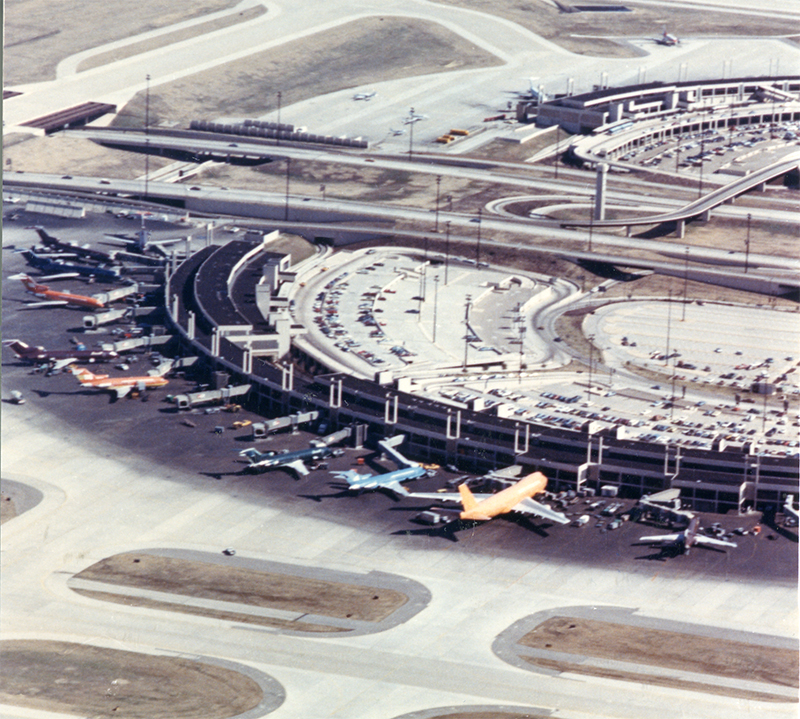
As early as 1964, the Civil Aeronautics Board warned Dallas and Fort Worth that their lack of adequate air facilities would force jumbo jets of the 1970s to be routed to Houston. The new wide-bodied airliners, supersonic transports and giant cargo planes coming into use might bypass North Texas if Dallas and Fort Worth could not agree on a regional airport. The warning worked. After years of controversy, the two cities agreed in 1965 to build a joint, regional airport that would accommodate jet-age traffic into the 21st century.
Plans for the $700 million first phase of Dallas/Fort Worth Regional Airport took shape in 1969. Occupying 17,500 acres of prairie midway between the two cities, the jetport would be the largest airport in the world at the time of its construction.
Detailed design and construction supervision was handled by more than a dozen local engineering firms known as associate consultants. Freese, Nichols & Endress, in a joint venture with Rady & Associates, Inc., a combination known as FNE/RA, was retained as an associate consultant for airport utilities and roads. Joe Paul Jones was the project engineer.
FNE/RA had charge of more than $50 million in work at the mammoth airport.
Over four and a half years, the consultants worked with 13 of the 35 principal contractors on the project, designing and supervising construction on 21 separate contracts. They were responsible for the major highway and street system outside the immediate terminal area, including two large remote parking areas, a computerized parking control system, and toll gates; highway lighting and signs; 19 bridges; the water distribution and sanitary sewage systems; industrial waste collection and treatment facilities; underground electrical and telephone cable ducts; landscape irrigation; and 55 miles of security fencing.
When Dallas/Fort Worth Regional Airport officially opened January 13, 1974, rated among the world’s great engineering wonders. It represented a total investment of $875 million, including $65 million for land and $810 million in construction.
Freese and Nichols went on to work on dozens of projects at the airport in the following decades, ranging from taxiway extensions to air traffic control towers to the rental car complex.
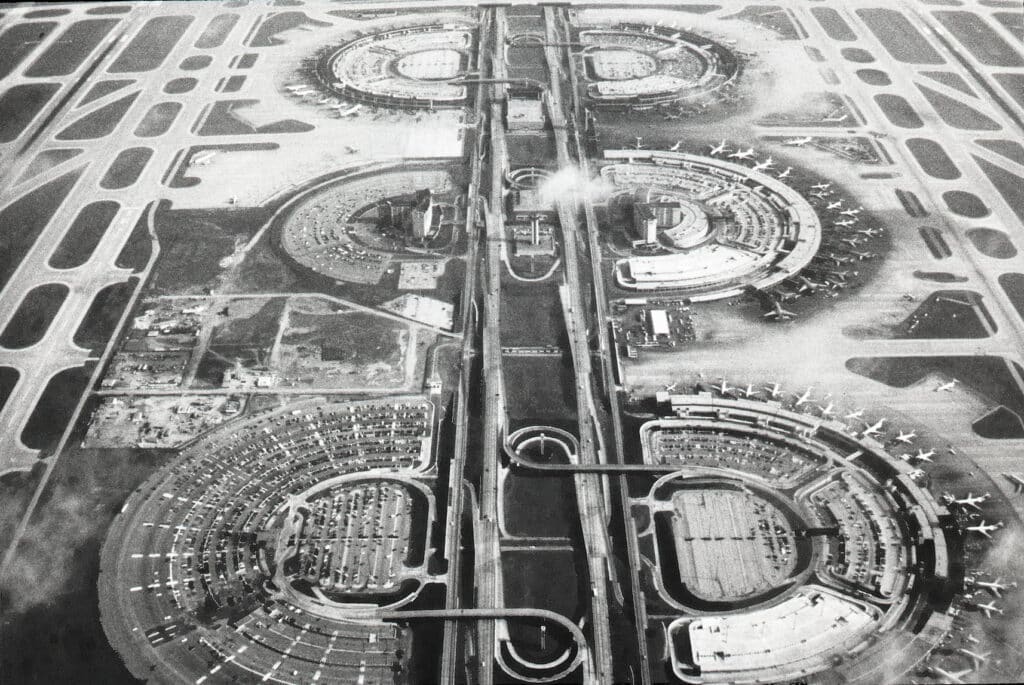
Now: Skylink and TRIP
Today, DFW is the world’s second-busiest airport, with daily flights to 256 destinations worldwide. It supports 60,000 on-airport employees and drives $37 billion in annual economic activity. Critical to DFW’s continued growth in the 21st century were Skylink and TRIP, and Freese and Nichols made important contributions to both programs.
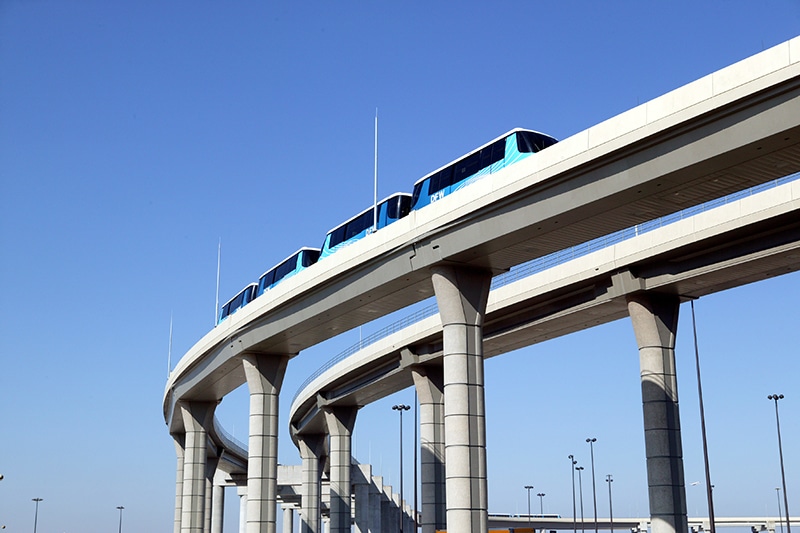
In the 2000s, we served as part of a team of consultants who designed the DFW Skylink – the automated people mover system that transformed the airport’s operation. Our firm supplied key design team members for structural, civil, mechanical, electrical and plumbing systems, as well as inspectors to expedite construction. Typically, the design of a project this size would take at least 30 months. The majority of the Skylink project was designed in only 11 months.
Skylink was constructed over active airfield operations and connects all the terminals using five miles of elevated tracks and ten 50,000-square-foot stations. At the time, it was the largest construction project in the Southwest. The $864 million project was completed in 2005. In its first decade, Skylink transported more than 141 million passengers. This project received the prestigious Judges Award for Design as part of the Texas Construction Best of 2004 Awards from Texas Construction Magazine.
In the 2010s, Freese and Nichols led the program management team for the Terminal Renewal and Improvement Program (TRIP), an eight-year, $3.1 billion renovation of DFW’s terminal complex.
The modernization of Terminals A, B and E included improvements for airport operations and travelers: new gates, streamlined security checkpoints, revamped baggage handling and delivery, greatly increased concession options, more efficient lighting and climate controls and the expansion of international arrival gates into Terminal B. This program included the largest concessions redevelopment program ever attempted at a U.S. airport and the first multimodal station at DFW Airport (Dallas Area Rapid Transit light rail).
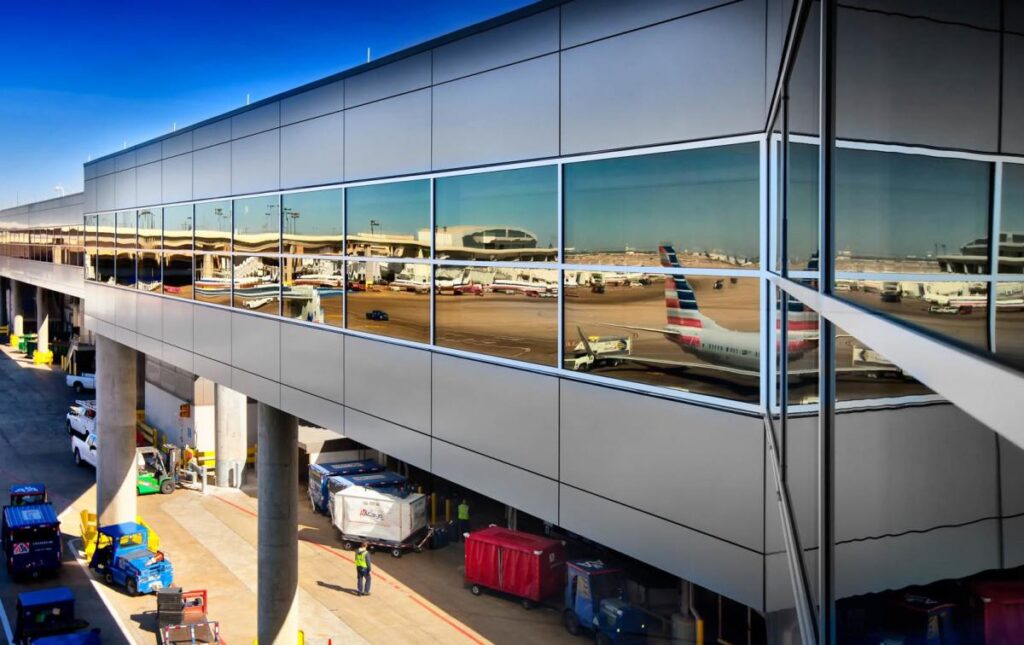
Freese and Nichols led a large team of subconsultants with multiple stakeholders. Through coordination, communication and commitment to client service, we delivered a program that provides a model for complex terminal overhauls at major airports.
The entire program, completed in 2018, included 26 individual projects inside and outside the Central Terminal Area. During peak times, 74 Freese and Nichols managers, 250 designers and 4,500 construction workers were involved on-site. The project also had an exceptional safety record. On the Terminal B project alone, over 3.2 million man-hours were worked with no fatal injuries, and all other safety metrics were well below national averages.
In 2018, the Terminal B renovation received the Outstanding Achievement Award from the North Texas Chapter of the Construction Management Association of America (CMAA) in the Transportation, $100 Million-Plus category. In 2015, Engineering News-Record named Terminal A Phase II the Best of the Best Projects in the Airport/Transit category.
Today, Freese and Nichols supports the DFW Facilities program, which has more than 100 projects in various stages from planning to closeout with a portfolio value of more than $900 million.
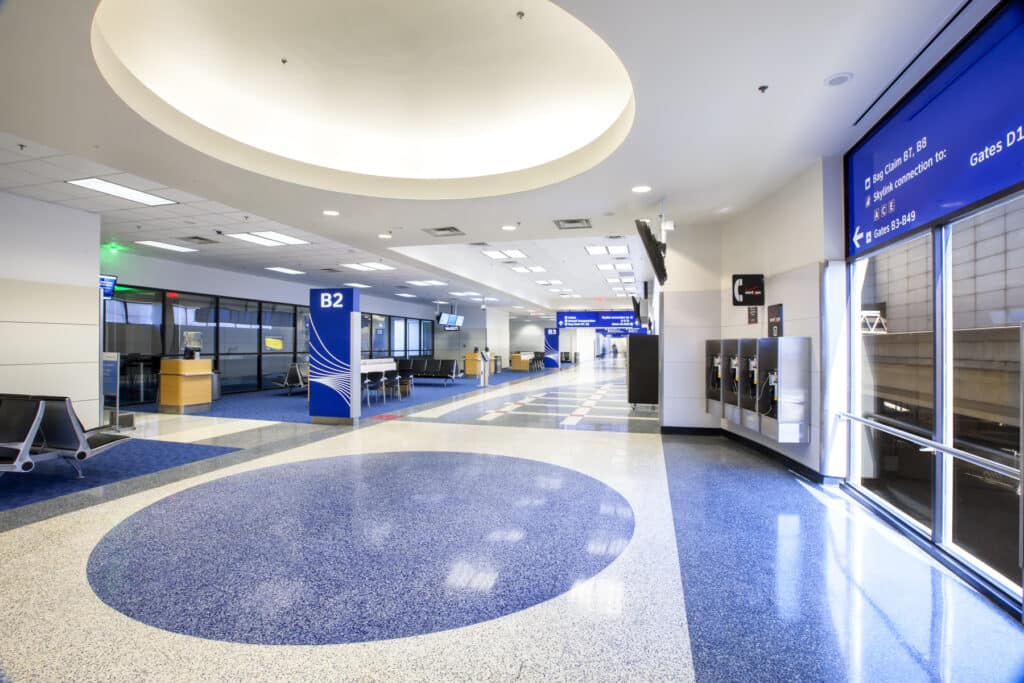
Originally published June 26, 2019, and updated February 13, 2024.